The ocean was calm and the air warm on that day, so we let the gentle wind blow through our hair and watched the island getting closer, as I snapped pictures of the rocks, caves, and beaches that made up the shore. There were many caves indented in the side of the sheer cliffs, and I longed to be able to explore them in more detail. But today’s trip was for exploring an underground of a much different type.
Before heading on to our primary destination, however, we stopped for a visit to the rocky beach and gathered some beach rocks of different sizes and shapes, marvelling at the sparkles and colours in the rocks, worn smooth and round by the continual motion of the water slowly shaping and polishing them over the years. I gamely packed the kids` newly found treasures in my backpack, wryly amused that I was carrying with me an actual bag of rocks. I did have to stop and take a photo or two of a couple of rowboats lying upside down on the beach, a reminder of days when they may have been the primary mode of support for some of the residents.
Loading ourselves - and the rocks - back into the car, we continued on to the Number 2 mine, an iron ore mine begun in 1902 and closed in 1949, a part of which was re-opened for tours just a few years ago. The museum at the top of the mine shaft is full of artifacts from the mines, boats, and people living in the area. Four of the six mines on the island went not only underground, but roughly two and half miles out under the waters of Conception Bay. Standing in the mine just a few hundred feet down, it was hard to imagine the incredible depth and breadth of the mine in its prime, and the feeling of knowing that unknown tonnes of water were weighing down on the ceiling just a couple hundred feet over the heads of the miners. The tour guide explained how pillars were left at strategic places to support the roof, and the “rooms” were laid out in a pattern and numbered so that the miners could always tell where they were and where they needed to go in the vast maze of the tunnels in darkness broken only by a few candles or kerosene lamps lodged in small niches in the wall or attached to the helmets worn by the workers.
The guide led us to the underground stables where she explained that the horses which pulled the ore carts to the surface lived most of their lives entirely underground, never going above until they were ready to retire, and then they had to have their eyes covered and slowly adjusted to the light as they had lived in darkness for years, and the bright, unfamiliar sunlight would have caused them great pain. Children of just eight or nine years of age would be charged with working in the mine many hours a day looking after the horses. To illustrate the effect of the darkness in which they toiled, the guide left us in the stables and turned off the electric lights which had been installed for the sake of the tours, plunging us into complete darkness. She then walked slowly back, the light from her flashlight casting shadows on the rock, as she sang the haunting words of Rita Macneil’s, Working Man.



Continuing on, we visited another part of the mine to review some of the tools left behind as if dropped by the miners at the end of a shift, only to never be taken up again. She described the incredible noise that would have been caused by the sound of the pickaxes and shovels continually chipping away at the solid rock, extracting the ore from the very walls and ceiling around them, all by hand. It was hard work, long hours, and low pay, and dangerous at times, but the miners would also find fun in the midst of their toil, playing pranks on each other and teasing newcomers to bring cheer to the dark, damp, and deafening environment.
The mine tour is highly recommended for visitors to the area to get a sense of the history and importance of the industry to not only the people of Bell Island, but to the world. The ore would be carried across the island in carts, and ore carriers would take the ore to places as far away as the United States and Germany. Four of these ships were sunk on the shore of Bell Island by German u-boats during World War II, and one of the torpedoes also struck the iron ore loading dock, making it the only location in North America to suffer a direct attack by German forces during the war. The wreckage can still be seen in the area during low tide.
Despite the fascination of the tour, it felt good to emerge above ground and into the heat and light again. The temperature drops to about 10 degrees Celcius at the bottom of the mine, and the bright summer sun seemed blinding after the darkness of the mine, even with the benefit of the electric lights. After a brief visit to the gift shop, we headed out to find the lighthouse at the end of a very narrow lane. As we drove, we noted the many fields and natural landscapes, still unspoiled by the developments and subdivisions which now exist in the similar places where we had played as children at home.
Just behind the lighthouse is a large sea stack which I had photographed about five years before. It wasn`t until the picture was viewed later, that I noticed that there appeared to be a face in the rock. The really strange thing was that, to my mind, the face held an uncanny resemblance to the photo of a real-life miner from the island which was posted in the museum. So on this trip, I went back to see if I could see the face in the actual cliff or if it had just been a trick of photography. Sadly, it appears that many of the features had worn or broken away in the intervening years, and the face was no longer clear even on new photographs, but I did manage to get a picture of the photo of the miner to compare with the earlier shot. There was definitely a distinct similarity in the features, although the formation was clearly natural and carved only by the elements of wind and sea.
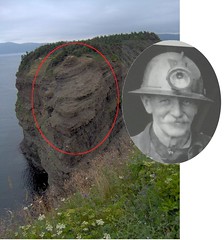
After a brief lunch, we boarded the ferry again, and made the short, enjoyable trip back home, watching the mainland get larger and larger as we once again approached Portugal Cove. There are so many other things to do and see on Bell Island, I strongly recommend planning a day to explore it in more detail. Just be sure to arrive early, as the line up for the ferry can be long, to ensure that you maximize your time. Then sit back and be prepared to go back in time to a place where life is simpler, time is slower, and people remember what it is to be a community that works together and be proud of their roots.
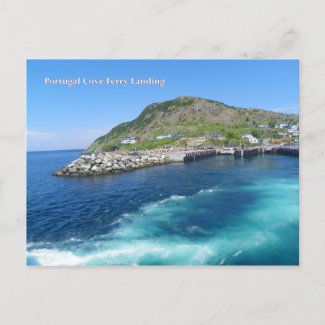

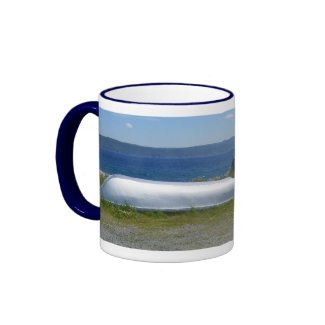

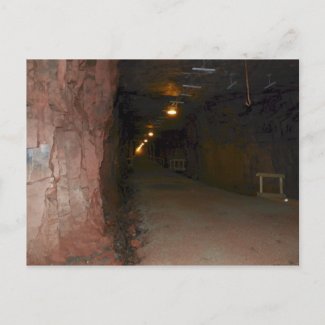
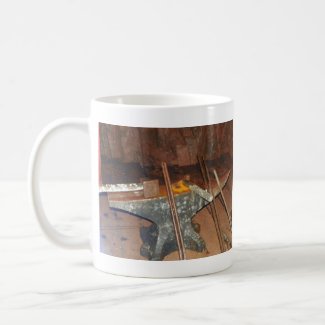
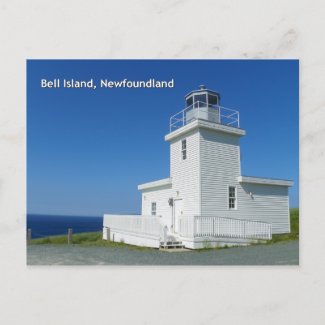
Hi!
ReplyDeleteDid you get a rock for me??? The mines look to be awesome to walk through, though I am sad for the horses :( Did you see any ghosts? I would imagine more than a few would be lingering.
You have definitely made me want to visit there. Sad I lived in Nfld for over half my life and never visited Bell Island
Great job and as always, inspiring pictures!
I did pick up a couple of beach rocks, and you're more than welcome to one of them. Didn't take any of the ore on this trip, though.
ReplyDeleteThe mine was amazing. Sadly, they're mostly filled in by water now, except for the part they've opened. Interestingly, it's fresh water from condensation and runoff, not ocean water as I'd expected. No ghosts that I'm aware of. I don't know how many deaths there were in the mines - and if you mean the horses, from what I understand, many were brought up to the fields to retire when they got older (rather than all of them dying in there), but they had to be blindfolded for their eyes to adjust to the light slowly. And apparently they were well cared for in the mines, even if it was underground. I guess they didn't know any different, so they were content with what they had.
It's definitely a great place to visit. I really should have been there more often myself, since I've lived in view of it almost my entire life! :->